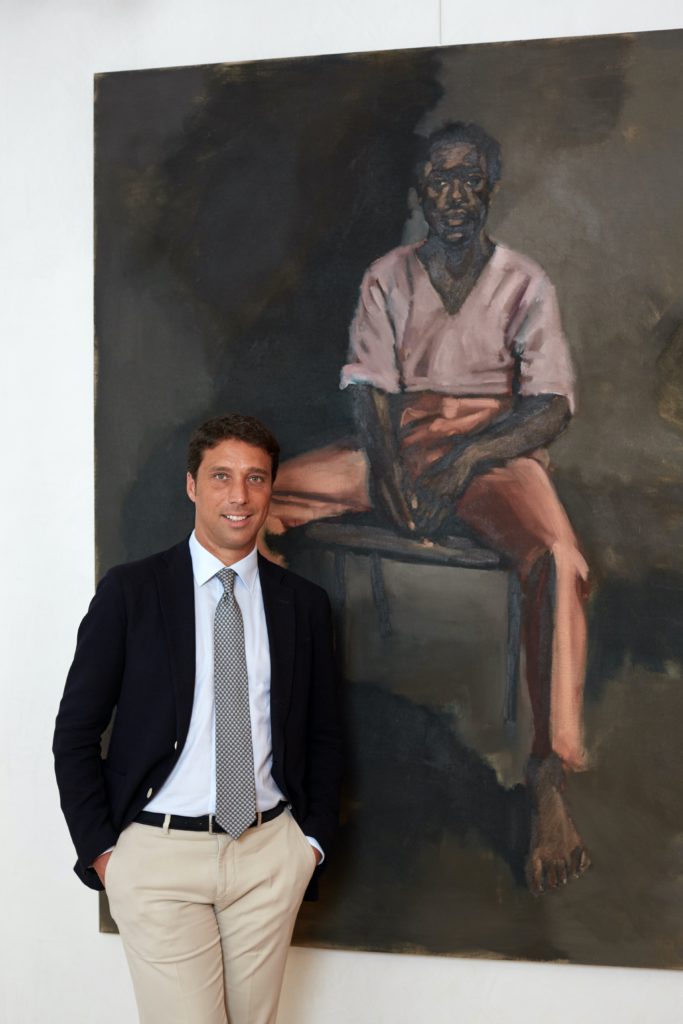The interviews of ProfessioneARTE.it
He is Alessandro Guerrini, CEO of Art Defender and Art Defender Insurance.
Five questions to get a preview of the great art professionals, the daily challenges to face, the choices that have determined their path in the system and in the art market, the changes under the banner of digital and the advice for those who want to undertake the same career in collaboration with ProfessioneARTE.it.
The profession of a lifetime can stem from a passion. Alessandro Guerrini reveals his path in the world of art, from the debut in the Peggy Guggenheim Collection in Venice, to approach the art market and services, an increasingly expanding sector.
A marked sensitivity for art, together with professionalism and competence are peculiarities that cannot be missing in those who support collectors in the management and protection of their works of art.
Today Alessandro’s goal is to raise awareness of the importance that art services increasingly have for the art world, services that activate an economic value of over 20 billion dollars.
For him, determination, study and updating can never be missing in a market like that of art as fascinating as selective, today more than ever in full digital revolution.

Alessandro Guerrini (Bologna, 1978) is CEO of Art Defender S.r.l. and the subsidiary Art Defender Insurance S.r.l.
He graduated in Economics and Management of Arts and Cultural Activities at the Ca ‘Foscari University of Venice and subsequently, winning a scholarship, he obtained the Master in Marketing for Art and Culture Companies at the High School in Media, Communication and Show of the Università Cattolica del Sacro Cuore di Milano.
1. How did your journey in the art world begin?
I can say it started as a child. My parents forwarded me a strong sensitivity towards art: form this started that the desire to turn it into a profession.
In 2003 I started working on the Peggy Guggenheim Collection in Venice, an extraordinary reality of which I keep a truly indelible memory.
Than I decided to approach the art market and the field of services for collectors: I concluded a couple of experiences in some consultancy companies, I entered Open Care and – after almost twelve years and after reaching the top position – I arrived in Art Defender, fascinated by the project of Alvise di Canossa, its president and founder.
2. How would you describe your profession today?
First of all, I consider myself very lucky: I can do a job consistent with my training path and, above all, I have the opportunity to do something that amuses and excites me.
What we do, in Art Defender, is to support collectors to help them better manage their works of art, which are passions at the same time, but also investments to be protected
3. How has your profession changed over time?
The sensitivity towards art, also understood as an investment to be managed using professionalism and specialized skills, is undoubtedly more widespread today, compared to 15 years ago when I approached this sector.
At the time, it was necessary to “create” a demand for services and explain the potential benefits to potential users.
Today the sector is more mature: the offer is wider and the market more aware and receptive.
The real challenge now is to make those who do not know you know the quality of the services and to bring out the added value that you are able to bring compared to your competitors.
4. What impact is digital having on your sector?
Fortunately, in recent years I have witnessed a progressive approach of the sector to the “digital” world.
We ourselves in Art Defender try to grasp and exploit its full potential, both in operations – to simplify the operations we carry out daily – and in communication, to tell what we do and what distinguishes our offer.
However, if I look more generally at the sector in which we operate, I also see a lot of resistance to a further diffusion of the tools that technology makes available: in part I think it is a resistance – common to all areas – due to the difficulty of accepting that some professionalism and some ways of working are no longer compatible with the time in which we live.
But I think that digital resistances have a lot to do with the indispensable “social” component of the “real” world and, of course, with the transparency and reduction of the information asymmetry that technology can bring to the system.
5. What would you recommend to a young person who wants to pursue your profession?
Certainly to roll up their sleeves and to study with great determination in order to successfully access a market as fascinating as selective.
At the same time, I would recommend carefully evaluating every occasion and opportunity: in my opinion, professional paths in the art sector often do not follow predetermined and consolidated procedures.
The careful construction of one’s professional profile – even with “unpublished” experiences, skills and contaminations – can represent a great competitive advantage on the job market!
This interview was conducted in collaboration with ProfessioneARTE.it, the first community dedicated to training, updating and orientation towards the professions of art.





